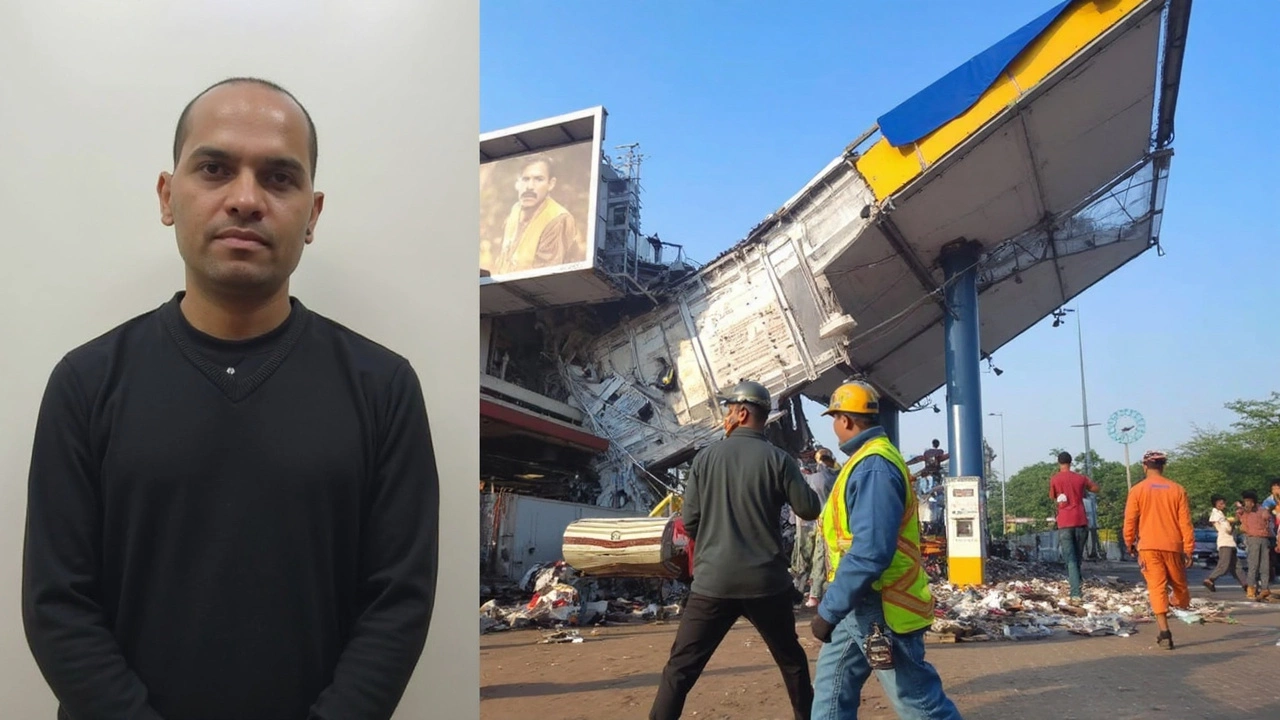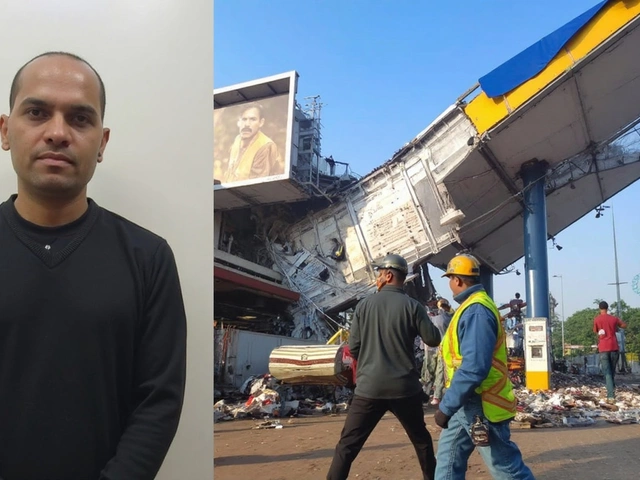Ghatkopar Hoarding Collapse: Crime Branch Nabs Fifth Accused Arshad Khan in Ongoing Billboard Tragedy Probe

Hoarding Collapse: A Rainy Day Turns Deadly in Ghatkopar
Imagine catching shelter from a sudden downpour, only to have a massive metal billboard come crashing down above you. That's what happened on May 13, 2024, at a petrol pump in Mumbai’s Ghatkopar. The billboard was enormous—120 feet by 120 feet, way past the legal limit of 40 by 40 feet. When the rains picked up, the giant hoarding simply couldn’t hold. Seventeen people died, more than 75 others were hurt, and rescue teams worked over 66 hours to scrape through the fallen wreckage. Some bodies were only recovered three days later, making it one of the deadliest accidents of the year.
This disaster didn’t come out of nowhere, either. Mumbai's outdoor advertising scene is notorious for unauthorized and oversized hoardings. After the collapse, the Brihanmumbai Municipal Corporation (BMC) swung into action, ordering the removal of similarly illegal structures all across the city. It wasn’t just a local tragedy—it turned into a wake-up call about how little oversight exists over urban advertising and who’s really responsible when the worst happens.
Who’s to Blame? Accused and Arrests in the Spotlight
The fallout wasn’t only at the site. Law enforcement shifted into high gear. The owner of the collapsed billboard didn’t stay free for long; police arrested him within days, charging him with culpable homicide, which is just one notch below murder in legal seriousness. The search widened as investigators tried to track down everyone linked to this catastrophe.
The latest to be nabbed is Arshad Khan, identified as the fifth accused. He was picked up in Lucknow by the Mumbai Crime Branch on December 31, more than seven months after the collapse. Khan's arrest came after the main accused was already caught—also in Lucknow—showing that the network of those allegedly responsible stretches beyond Mumbai’s borders.
Police have been digging into paperwork, permissions, and contractor lists to figure out how such an enormous structure could be put up without setting off official alarms. The case still circles around possible negligence by regulatory bodies, but so far the probe has shied away from holding specific government officials directly to account.
The compensation, announced by Chief Minister Eknath Shinde, brought some relief: ₹500,000 for each family who lost someone in the collapse. It's a gesture that's sadly all too common when poor enforcement and public risk overlap in booming cities like Mumbai.
By May 2025, a government-appointed panel submitted its findings, pushing for smaller, safer billboard sizes and stricter zoning. But the report avoided pointing fingers at specific officials, instead calling for broad reforms in how outdoor advertising is managed.
The Ghatkopar hoarding collapse created a wave of change—at least on paper—for one of the world’s most billboard-packed skylines. Whether it leads to cleaner, safer streets is another story, but for now, the case runs on, with more questions over negligence and accountability than real answers.
